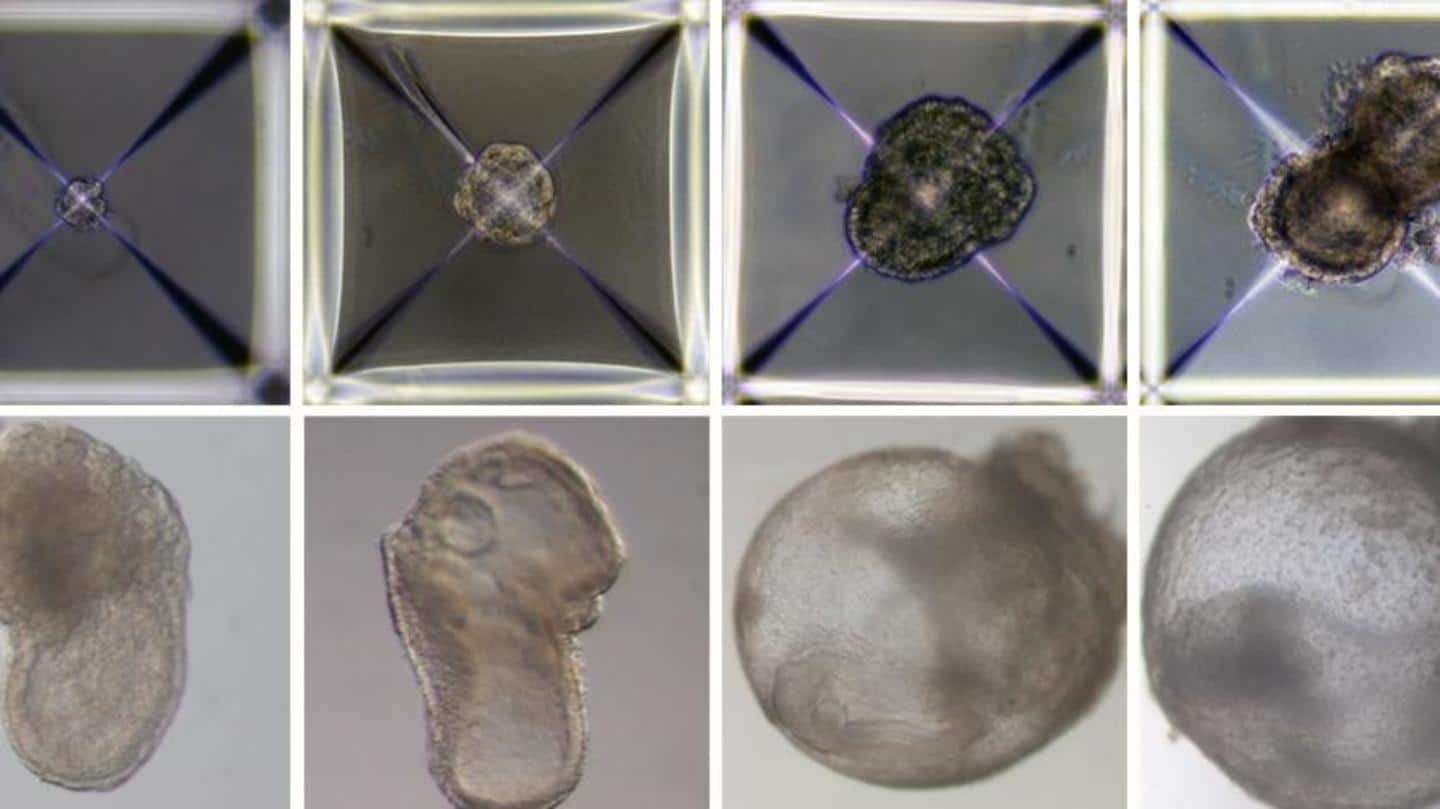
Scientists create first-ever 'synthetic embryos' with brain and beating heart
What's the story
In a major breakthrough, a group of Israeli scientists has managed to redefine the boundaries of biology with the world's first "synthetic embryos." These advanced synthetic embryos (sEmbryos) were created by scientists from the Weizmann Institute using stem cells of mice. The process did not involve eggs, sperm, and fertilization. The study was published in the Cell journal.
Context
Why does this story matter?
The creation of synthetic embryos could turn out to be one of the most groundbreaking discoveries of this decade. This could give us new sources of tissues and cells for human transplantation. We aren't even close to that, but the implications of this experiment are more far-reaching than we can fathom. And that also raises questions on legality and ethical aspects of synthetic embryos.
Cells
Stem cells in a naive state can take several forms
The mouse stem cells were chemically treated to reset them into a naive pluripotent state from which they could become any type of cell, including heart, liver, brain, or otherwise. These naive cells were separated into three groups. Two of them were given additional treatments to over-express the genes to make the placenta and yolk sac.
Artificial womb
Same group of scientists developed artificial womb last year
The same group of scientists was in news last year when they developed an artificial womb to grow natural mouse embryos. The same bioreactor was used in this experiment as well. The three groups of stem cells were placed in this artificial womb to mix and mingle. These cells then came together to form clumps.
Embryo
Embryos were in the bioreactor for 8.5 days
Out of the 10,000 cellular clumps, only 50 continued their development to become embryo-like structures. The synthetic embryos developed for 8.5 days (nearly half of a typical mouse pregnancy). Their shape changed from spherical to elongated. The central nervous system emerged by day 6 and later became a tiny, wrinkled brain. On day 8, they developed intestinal tracts and small, beating hearts.
Next step
Team wants to understand how cells know what to do
When compared to the internal and gene structures of natural mouse embryos, the synthetic models displayed 95% similarity. Professor Jacob Hanna, the leader of the research team, said, "Our next challenge is to understand how stem cells know what to do - how they self-assemble into organs and find their way to their assigned spots inside an embryo."
Human embryos
Human synthetic embryos will be used for medical conditions
Hanna has founded a company called Renewal Bio which aims to grow human synthetic embryos. He wants to provide tissues and cells for medical conditions. However, human synthetic embryos are not considered an immediate prospect. If we consider the inefficiency involved in creating synthetic mouse embryos, it may be a while before the findings translate into human embryos.
Ethics
It is important to define what is ethically acceptable
An experiment such as this always invites several ethical questions. "The mouse is a starting point for thinking about how one wants to approach this in humans," said Alex Meissner of Max Planck Institute for Molecular Genetics. The important question is, "how far do we want to take it?" he added. It's imperative to identify where the line is.